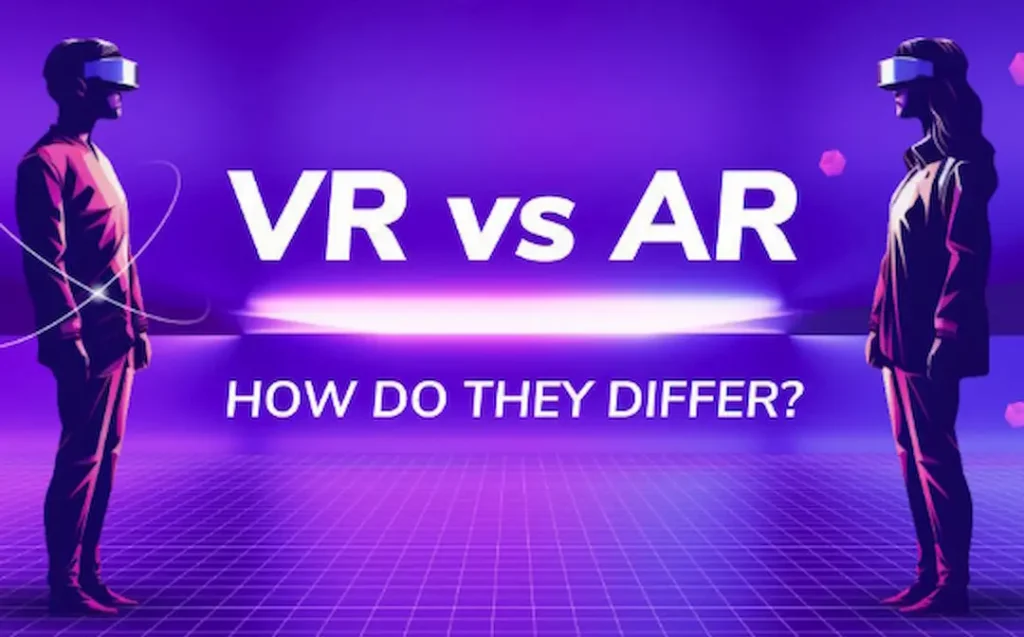The Reality Check: Augmented reality(AR) vs virtual reality(VR) in the Market Are Reshaping Digital Experiences in 2025

The digital landscape is witnessing an unprecedented transformation as augmented reality (AR) and virtual reality (VR) technologies battle for market supremacy. While both technologies promise to revolutionize how we interact with digital content, their market trajectories tell distinctly different stories.
Market Dynamics: The Current Playing Field
The AR vs VR in market comparison reveals fascinating insights about consumer adoption patterns. AR technology has gained remarkable traction in mainstream applications, with retail giants integrating virtual try-on features and social media platforms launching interactive filters that captivate millions daily.
VR, meanwhile, has carved out its niche primarily in gaming and enterprise training sectors. The immersive technology demands dedicated hardware investments, creating both opportunities and barriers for widespread adoption.
Consumer Adoption Trends: Where Reality Meets Preference
Recent market research indicates that AR experiences resonate more naturally with everyday smartphone users. The technology seamlessly blends digital elements into real-world environments without requiring specialized equipment. This accessibility factor significantly influences the AR vs VR in market positioning.
VR adoption, though slower in consumer markets, demonstrates remarkable growth in specific verticals. Healthcare professionals use VR for surgical training, while architects create immersive walkthroughs for clients. These specialized applications command premium pricing and foster deeper market penetration within targeted industries.
Revenue Streams: Following the Money Trail
The financial landscape of AR vs VR in market reveals intriguing patterns. AR generates revenue through diverse channels including mobile app purchases, advertising partnerships, and e-commerce integrations. Major brands allocate substantial budgets toward AR marketing campaigns, recognizing their potential for customer engagement.
VR revenue streams concentrate heavily on hardware sales, premium content subscriptions, and enterprise solutions. Gaming companies report significant returns from VR titles, while training simulation providers secure long-term contracts with corporate clients.
Hardware Evolution: The Technology Race
Hardware development significantly impacts the AR vs VR in market competition. AR devices range from smartphone applications to sophisticated smart glasses, offering varied entry points for different user segments. Companies like Apple and Google continue refining AR capabilities within existing device ecosystems.
VR hardware requires more substantial investments, with headset prices influencing adoption rates. However, technological advances have made VR more accessible, with standalone devices eliminating the need for high-end gaming computers.
Industry Applications: Beyond Entertainment
The professional applications of AR vs VR in market extend far beyond gaming and social media. Manufacturing companies deploy AR for equipment maintenance guidance, while VR transforms employee onboarding processes across various sectors.
Healthcare represents a particularly promising frontier where both technologies demonstrate unique value propositions. Surgeons use AR overlays during operations, while VR provides safe environments for treating phobias and PTSD.
Market Challenges and Opportunities
Privacy concerns surrounding AR data collection pose significant challenges for widespread adoption. Users express apprehension about cameras constantly analyzing their surroundings, creating regulatory hurdles that companies must navigate carefully.
VR faces different obstacles, primarily related to motion sickness and social isolation concerns. However, these challenges also present opportunities for innovation as developers create more comfortable and socially connected VR experiences.
Future Market Predictions
The AR vs VR in market landscape suggests complementary rather than competitive futures. AR appears positioned for broader consumer adoption through integration with everyday devices and activities. VR will likely maintain its stronghold in specialized applications requiring complete environmental immersion.
Emerging trends indicate hybrid approaches gaining momentum, with mixed reality solutions combining AR and VR elements to create more versatile user experiences.
Investment and Funding Patterns
Venture capital flows reveal interesting preferences within the AR vs VR in market ecosystem. AR startups attract diverse funding sources, from social media giants to retail conglomerates seeking innovative customer engagement solutions.
VR investments concentrate more heavily on gaming studios and enterprise solution providers, reflecting the technology’s current market positioning and revenue generation patterns.
Global Market Expansion
International markets show varying preferences in the AR vs VR in market adoption. Asian markets demonstrate strong enthusiasm for AR social features, while European enterprises lead VR training implementations.
These regional differences create opportunities for companies to tailor their strategies according to local market conditions and cultural preferences.
The Verdict: Coexistence Over Competition
Rather than viewing AR vs VR in market terms as a zero-sum competition, industry leaders increasingly recognize both technologies serve distinct purposes within the broader digital transformation narrative.
AR excels in enhancing real-world experiences with digital overlays, making it ideal for retail, navigation, and social interactions. VR dominates immersive applications requiring complete environmental control, perfect for training, gaming, and therapeutic interventions.
The most successful companies will likely be those that understand these complementary strengths and develop integrated strategies that leverage both technologies appropriately for their specific use cases and target audiences.
As we move forward, the AR vs VR in market discussion will evolve from competition to collaboration, creating richer, more diverse digital experiences that transform how we work, learn, and play in our increasingly connected world.

